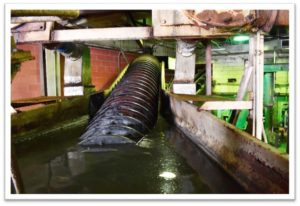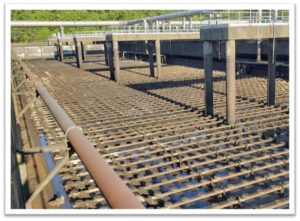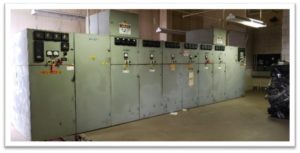Project Background
The Springfield Regional Wastewater Treatment Facility (SRWTF) provides wastewater services to seven communities in the lower Pioneer Valley. Originally built in the late 1930s and last substantially modernized in the 1970s, the SRWTF is undergoing significant upgrades as part of the Commission's Water and Wastewater Renewal Program. The projects supported in part by a $250 million low-interest loan from EPA's WIFIA program and low-interest financing from the Massachusetts Clean Water State Revolving Fund.
Project Description
The upgrades include three major components:
Wastewater Grit Removal Improvements
"Grit" such as sand, gravel, coffee grounds, and food scraps, among other things, regularly makes its way into wastewater. Removing grit prevents its accumulation in pipes, basins, and machinery. This project will improve the removal of "grit" solids from the treatment process by converting two gravity thickeners to grit removal tanks, and upgrading the existing grit cyclones and clarifiers. A replacement ventilation system for the grit/screening room will also reduce odors and corrosive air to protect workers and equipment. Expected benefits of the project include increased treatment efficiency, prolonged equipment life, and improved safety and odor conditions.

Biological Nutrient Removal Upgrade
The removal of nitrogen and phosphorus during the wastewater treatment process is important in protecting environmental water quality and meeting evolving EPA discharge permit regulations. Nutrients are removed by microorganisms that are activated by aeration.
The current aeration system is at the end of its useful life. This system will be upgraded with the latest control technology and diffuser heads. High efficiency equipment, including a new electronic system, will increase treatment effectiveness and provide significant energy savings.

Electrical System Improvements
The electrical system at the SRWTF is original to the 1970s modernization. The system is now past its useful life and not in compliance with some of today's codes. Because the plant is in constant use, it is important to reduce the risk of a shutdown due to an electrical failure. This project will add new primary feeds, control panels, switchgear, and emergency generator, as well as new primary and secondary power distribution cables. Expected benefits include increased resilience from power failures and renewal of end-of-life infrastructure.
